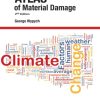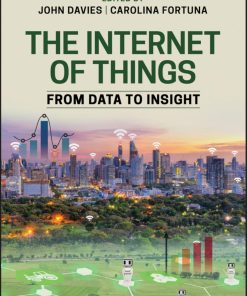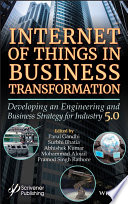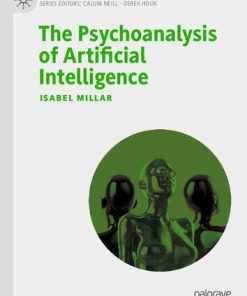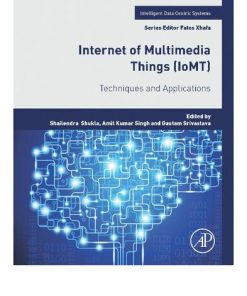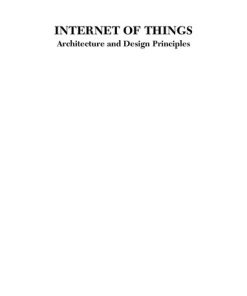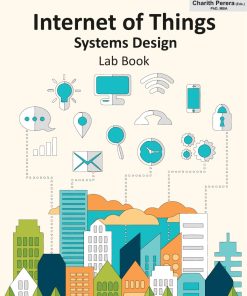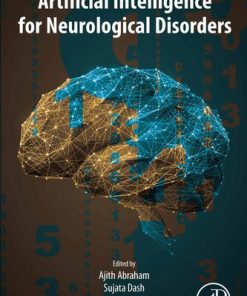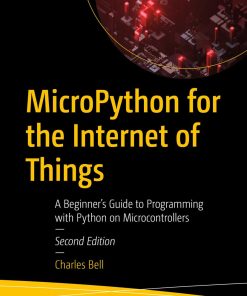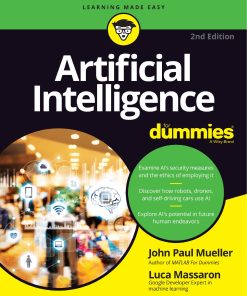(EBOOK PDF)Artificial Intelligence to Solve Pervasive Internet of Things Issues 1st Edition by Gurjit Kaur, Pradeep Tomar, Marcus Tanque 9780128196984 012819698X full chapters
$50.00 Original price was: $50.00.$25.00Current price is: $25.00.
Artificial Intelligence to Solve Pervasive Internet of Things Issues 1st Edition by Gurjit Kaur, Pradeep Tomar, Marcus Tanque – Ebook PDF Instant Download/Delivery: 9780128196984, 012819698X
Full download Artificial Intelligence to Solve Pervasive Internet of Things Issues 1st Edition after payment
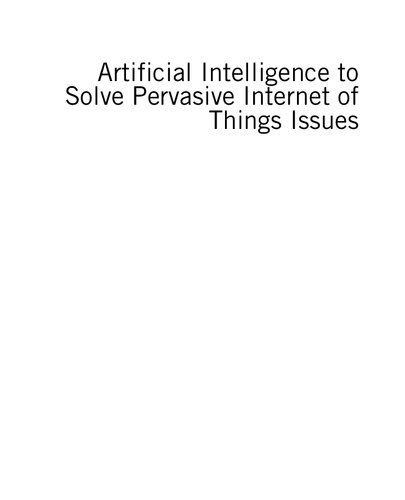
Product details:
• ISBN 10:012819698X
• ISBN 13:9780128196984
• Author:Gurjit Kaur, Pradeep Tomar, Marcus Tanque
Artificial Intelligence to Solve Pervasive Internet of Things Issues
Artificial Intelligence to Solve Pervasive Internet of Things Issues discusses standards and technologies and wide-ranging technology areas and their applications and challenges, including discussions on architectures, frameworks, applications, best practices, methods and techniques required for integrating AI to resolve IoT issues. Chapters also provide step-by-step measures, practices and solutions to tackle vital decision-making and practical issues affecting IoT technology, including autonomous devices and computerized systems. Such issues range from adopting, mitigating, maintaining, modernizing and protecting AI and IoT infrastructure components such as scalability, sustainability, latency, system decentralization and maintainability.
The book enables readers to explore, discover and implement new solutions for integrating AI to solve IoT issues. Resolving these issues will help readers address many real-world applications in areas such as scientific research, healthcare, defense, aeronautics, engineering, social media, and many others.
Discusses intelligent techniques for the implementation of Artificial Intelligence in Internet of Things
Prepared for researchers and specialists who are interested in the use and integration of IoT and Artificial Intelligence technologies
Artificial Intelligence to Solve Pervasive Internet of Things Issues 1st Table of contents:
Chapter 1. Impact of Artificial Intelligence on Future Green Communication
Abstract
1.1 Introduction
1.2 The History of Artificial Intelligence
1.3 A Road Map of Using Artificial Intelligence for Green Communication
1.4 Key Technologies to Make 5G in Reality Using Artificial Intelligence
1.5 Features of Artificial Intelligence-Based Green Communication
1.6 Conclusion
Acknowledgment
References
Chapter 2. Knowledge Representation and Reasoning in AI-Based Solutions and IoT Applications
Abstract
2.1 Introduction
2.2 Background
2.3 Knowledge Representation and Reasoning
2.4 Knowledge Inference, Forward and Backward Chaining, and KL-One Languages
2.5 Artificial Intelligence
2.6 Artificial Intelligence for Information Technology Operations
2.7 AI, KRR and IoT Functions
2.8 Artificial Intelligence Applications and Tools
2.9 Machine Learning and Deep Learning
2.10 Robotic Process Automation
2.11 Internet of Things
2.12 Natural-Language Understanding and Interpretation
2.13 Learning Using Privileged Information
2.14 Picture Archiving and Communication System
2.15 Infrastructure-Based Mobile Networks
2.16 Dynamically Created Mobile Ad Hoc Networks
2.17 Intelligent Agents, Conversational and Natural Intelligence
2.18 Advanced Metering Infrastructure
2.19 Distributed Automation Networks
2.20 Optical Character Recognition and Human Minds
2.21 Simple Neural and Biological Neural Networks
2.22 Machine Intelligence Learning and Deep Learning
2.23 Upper Ontology and Machine Translation
2.24 Frame Problem and CycL Projects and Semantic Web of Things
2.25 Presenting, Reasoning, and Problem Solving
2.26 Simple Neural Networks, Artificial Neural Networks, and Natural Language Processing
2.27 Contextual Artificial Intelligence Perspectives
2.28 Complex Artificial Intelligence Systems and Swarm Intelligence
2.29 The Impact of Smart Dust on IoT Technology
2.30 The Next Generation of Computers and Functional Trends
2.31 Conclusion and Future Reading
References
Further reading
Chapter 3. Artificial Intelligence, Internet of Things, and Communication Networks
Abstract
3.1 Introduction
3.2 Machine Learning/Artificial Intelligence-Assisted Networking
3.3 Artiticial Intelligence in Communication Networks
3.4 Transforming Optical Industries by Artificial Intelligence
3.5 Artificial Intelligence in Optical Transmission
3.6 Artificial Intelligence in Optical Networking
3.7 Advantages of Machine Learning in Networking
3.8 Optical Technologies to Support Internet of Things
3.9 Applications of Internet of Things with Optical Technologies
3.10 Conclusion
References
Chapter 4. AI and IoT Capabilities: Standards, Procedures, Applications, and Protocols
Abstract
4.1 Introduction
4.2 Internet of Things
4.3 Artificial Intelligence
4.4 Conclusion
References
Chapter 5. Internet of Intelligent Things: Injection of Intelligence into IoT Devices
Abstract
5.1 Introduction
5.2 Methodology
5.3 Architecture of Internet of Things
5.4 Security and Privacy
5.5 Artificial Intelligence and Internet of Things
5.6 Applications of Internet of Things
5.7 Conclusion and Future Directions
References
Chapter 6. Artificial Intelligence and Machine Learning Applications in Cloud Computing and Internet of Things
Abstract
6.1 Introduction
6.2 Application of Machine Learning in Different Sectors of Society
6.3 Artificial Intelligence with Multiple Application Fields
6.4 Application of Internet of Things in Medical Field
6.5 Conclusion
References
Further Reading
Chapter 7. Knowledge Representation for Causal Calculi on Internet of Things
Abstract
7.1 Introduction
7.2 Background
7.3 Knowledge Representation
7.4 Dynamic Knowledge Representation
7.5 Intersection of Knowledge Representation, Causal Calculus, and Internet of Things
7.6 First-Order Logic and Predicate Calculus for KR, CC, and IoT
7.7 Structural Causal Model
7.8 Pearl’s Do-Calculus
7.9 Pearl’s Do-Operator
7.10 Pearl’s Bayesian Networks
7.11 Halpern–Pearl Causality
7.12 Shafer’s Probability Trees
7.13 CP-Logic from Prolog and ProbLog
7.14 Probabilities and Causal Relationships
7.15 Mathematical Rules for Do-Calculus
7.16 Bayesian Networks
7.17 Simulation and Equivalence Class
7.18 Future Research Direction
7.19 Conclusion
References
Further Reading
Chapter 8. Examining the Internet of Things–Based Elegant Cultivation Technique in Digital Bharat
Abstract
8.1 Introduction
8.2 Internet of Things
8.3 Issues to Consider Before Designing Your Elegant Farming Solution
8.4 Applications of Internet of Things in Agriculture
8.5 Why Will Internet of Things?
8.6 Future of Internet of Things in Agriculture (Smart or Elegant Farming)
8.7 Conclusion
References
Chapter 9. Machine Learning and Internet of Things for Smart Processing
Abstract
9.1 Introduction
9.2 Information Labeling and Information Segmentation
9.3 Machine Learning Tools
9.4 Computer Vision and Neural Network
9.5 Challenges and Solutions
9.6 Research Questions
9.7 Examination and Results
9.8 Web and Image Mining
9.9 Image Mining for Medical Diagnosis
9.10 Conclusion
References
Chapter 10. Intelligent Smart Home Energy Efficiency Model Using Artificial Intelligence and Internet of Things
Abstract
10.1 Introduction
10.2 Literature Review
10.3 Energy Efficiency Model
10.4 Need for Energy-Efficient Intelligent Smart Home Model
10.5 Basic Terminology Used
10.6 Components of Proposed Model
10.7 Working of Proposed Model
10.8 Technology Used in Making the Proposed Model
10.9 Comparison Between Models
10.10 Advantages of Proposed Model
10.11 Applications of Proposed Model
10.12 Conclusion and Future Scope
References
Chapter 11. Adaptive Complex Systems: Digital Twins
Abstract
11.1 Complex Systems
11.2 Approaches to Complex System Engineering
11.3 Digital Twins
11.4 Technology for Digital Twins
11.5 Case Study
11.6 Conclusion and Research Roadmap
References
Chapter 12. Artificial Intelligence Powered Healthcare Internet of Things Devices and Their Role
Abstract
12.1 Introduction
12.2 Role of Internet of Things in Healthcare
12.3 Ease of Treatment
12.4 Uses for Healthcare Establishments
12.5 Encountering Possible Challenges and Vulnerabilities
12.6 Innovation and Business Perspective of Internet of Medical Things
12.7 Robotics and Nanotechnology Amalgamation
12.8 The Implication of Nanotechnology
12.9 Complementing Government Schemes
12.10 Conclusion
Reference
Chapter 13. IoIT: Integrating Artificial Intelligence With IoT to Solve Pervasive IoT Issues
Abstract
13.1 Introduction
13.2 Conclusion
References
Chapter 14. Intelligent Energy-Oriented Home
Abstract
14.1 Introduction
14.2 Smart Homes, Ambient Intelligence, and Smart Grids
14.3 Architecture for an Intelligent Energy-Oriented Home
14.4 Implementation of Systems for Illustration of Intelligent Behaviors in an Intelligent Energy-Oriented Home
14.5 Test and Analysis of the Intelligent Energy-Oriented Home
14.6 Conclusions and Further Developments
Acknowledgments
References
Further Reading
Chapter 15. Corporate Cybersecurity Strategy to Enable Artificial Intelligence and Internet of Things
Abstract
15.1 Introduction
15.2 Cybersecurity
15.3 Understanding the Cyber-Adversarial System
15.4 Threat Vectors: Internal and External Threats
15.5 Nonmalicious Noncompliance
15.6 Malicious Noncompliance
15.7 Financially Motivated Cyber-Attackers
15.8 Ideologically and Politically Motivated Cyber-Attackers
15.9 Anatomy of a Cyber-Attack
15.10 Why Cybersecurity and Why Corporate Strategy
15.11 Cybersecurity Laws
15.12 Causes of Cybersecurity Inertia
15.13 Three I’s of Corporate Cybersecurity Strategy
15.14 Cybersecurity Systems Engineering
15.15 Enterprise Architecture Frameworks
15.16 Zachman Framework
15.17 US Department of Defense Architecture Framework
15.18 Service-Oriented Architecture
15.19 Cybersecurity IT Portfolio Management
15.20 Smarter Cybersecurity Leveraging Artificial Intelligence
15.21 IoT and Growing Cybersecurity Risk
15.22 The Change Management Challenge
15.23 Cybersecurity Expertise
15.24 Assess Current State
15.25 Making Cyber Part of Corporate Strategy
References
Chapter 16. Role of Artificial Intelligence and the Internet of Things in Agriculture
Abstract
16.1 Introduction
16.2 Artificial Intelligence in Agriculture
16.3 Components of Artificial Intelligence Required in Agriculture
16.4 Role of Machine Learning in Agriculture
16.5 Models for Farmers Services
16.6 Internet of Things Applications in Agriculture
16.7 Currently Used Artificial Intelligence and Internet of Things Technologies in Agriculture
16.8 Challenges with Artificial Intelligence and Internet of Things in Agriculture
16.9 Conclusion
References
Chapter 17. Integrating Artificial Intelligence/Internet of Things Technologies to Support Medical Devices and Systems
Abstract
17.1 Introduction—Medical Devices and Healthcare Systems
17.2 Problems in Conventional Medical Systems
17.3 Categories of Medical Devices
17.4 Internet of Things/Artificial Intelligence in Medical Devices and Healthcare
17.5 Enabling Technologies of Internet of Things in Medical Devices and Systems
17.6 Monitoring Using Internet of Things/Artificial Intelligence in Medical Devices and System
17.7 Critical Issues and Challenges of Internet of Things in Medical Devices and Systems
17.8 IoT Medical Devices and System Security
17.9 Scalability
17.10 Conclusion
References
Chapter 18. Machine Learning for Optical Communication to Solve Pervasive Issues of Internet of Things
Abstract
18.1 Introduction
18.2 Machine Learning Techniques
18.3 Machine Learning Techniques Used in Optical Communication
18.4 Machine Learning in Physical Layer
18.5 Machine Learning in Network Layer
18.6 Conclusion
References
Chapter 19. Impact of Artificial Intelligence to Solve Pervasive Issues of Sensor Networks of Internet of Things
Abstract
19.1 Introduction
19.2 Sensor Network Technology
19.3 Pervasive Issues Related to Sensor Networks
19.4 Role of Artificial Intelligence to Solve Pervasive Issues of Sensor Network
19.5 Features of Artificial Intelligence in the Internet of Things Revolution
19.6 Conclusion
Acknowledgment
References
Chapter 20. Principles and Foundations of Artificial Intelligence and Internet of Things Technology
Abstract
20.1 Introduction
20.2 Background
20.3 Existing Technologies in Artificial Intelligence and Internet of Things
20.4 Future of Artificial Intelligence and Internet of Things
20.5 Conclusion
References
Index
People also search for Artificial Intelligence to Solve Pervasive Internet of Things Issues 1st:
artificial intelligence to solve
what is the goal of artificial intelligence to solve
artificial intelligence to solve math problems
artificial intelligence to solve the world’s problems
artificial intelligence to solve math
Tags:
Artificial Intelligence,Pervasive Internet,Gurjit Kaur, Pradeep Tomar, Marcus Tanque
You may also like…
Computers - Computer Science
Computers - Internet & World Wide Web
Internet of Things in Business Transformation 1st Edition Parul Gandhi
Politics & Philosophy - Philosophical Positions & Movements
The Psychoanalysis of Artificial Intelligence 1st Edition Isabel Millar
Uncategorized
Computers - Internet & World Wide Web
Internet of Things Systems Design Lab Book 1st edition by Charith Perera
Computers - Artificial Intelligence (AI)
Artificial Intelligence for Neurological Disorders 1st Edition Abraham
Computers - Programming
Computers - Artificial Intelligence (AI)



